Affiliate links on Android Authority may earn us a commission. Learn more.
Google Pixelbook Go hands-on: The expensive Chromebook gets cheaper
Published onOctober 15, 2019
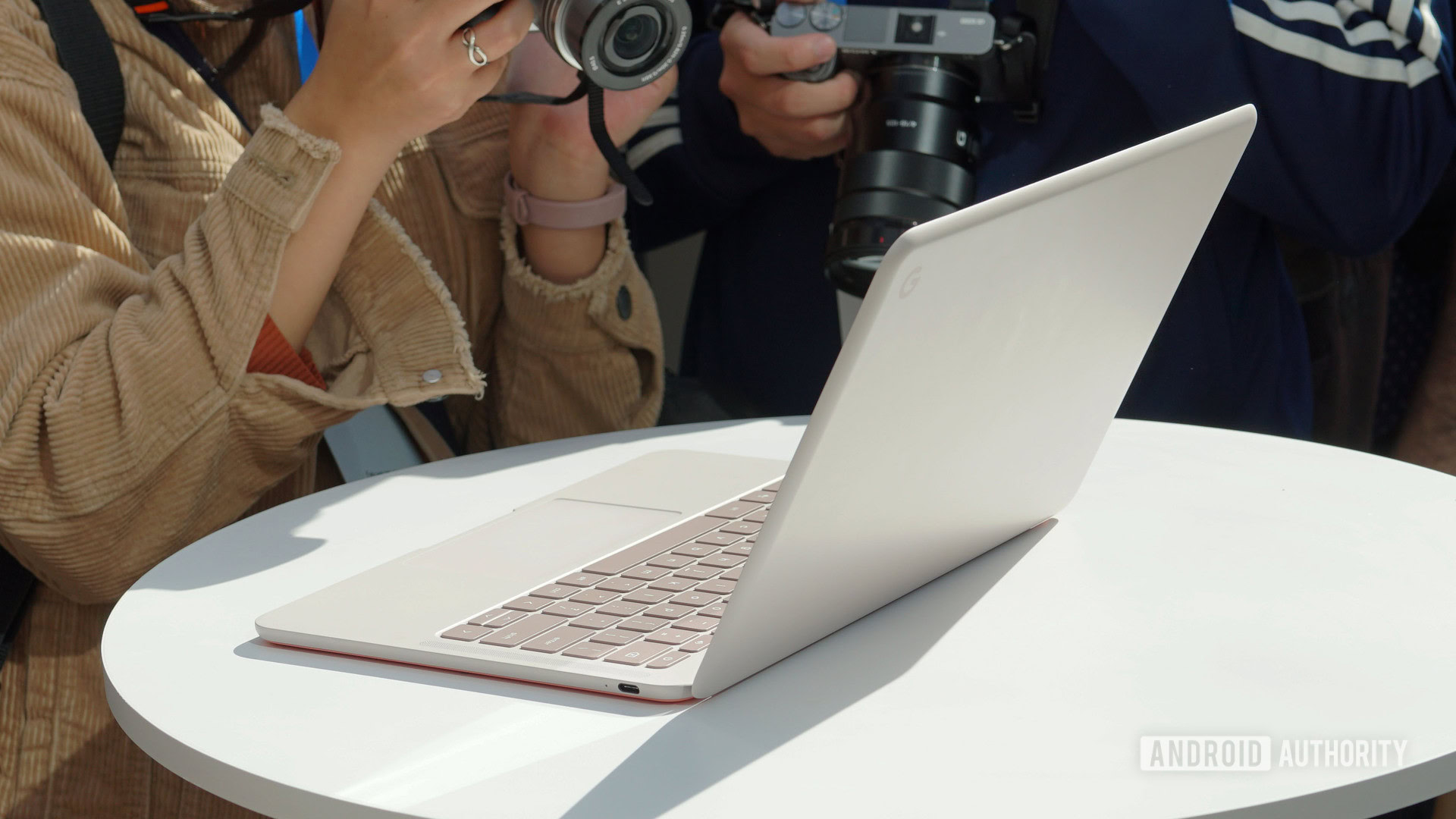
After last year’s 2-in-1 Pixel Slate sank faster than the Titanic, Google has once again changed its mind on what the Pixelbook is. The new Pixelbook Go is easily the most “normal” of all the Pixelbook iterations we’ve seen so far. Yes, it’s a little safe and boring, but safe sells. After playing with it for a hot minute I could totally see myself buying and using one, something I couldn’t with the previous two. This is the Android Authority Google Pixelbook Go hands on.
What is the Pixelbook Go?
The Pixelbook Go is a 13.3-inch Chromebook with a bunch of spec options to get you the exact mix of price and performance you’re after. With a price range between $649 and $1,399, there’s definitely an option here to suit your needs. The main question will be whether you can get the same thing cheaper elsewhere.
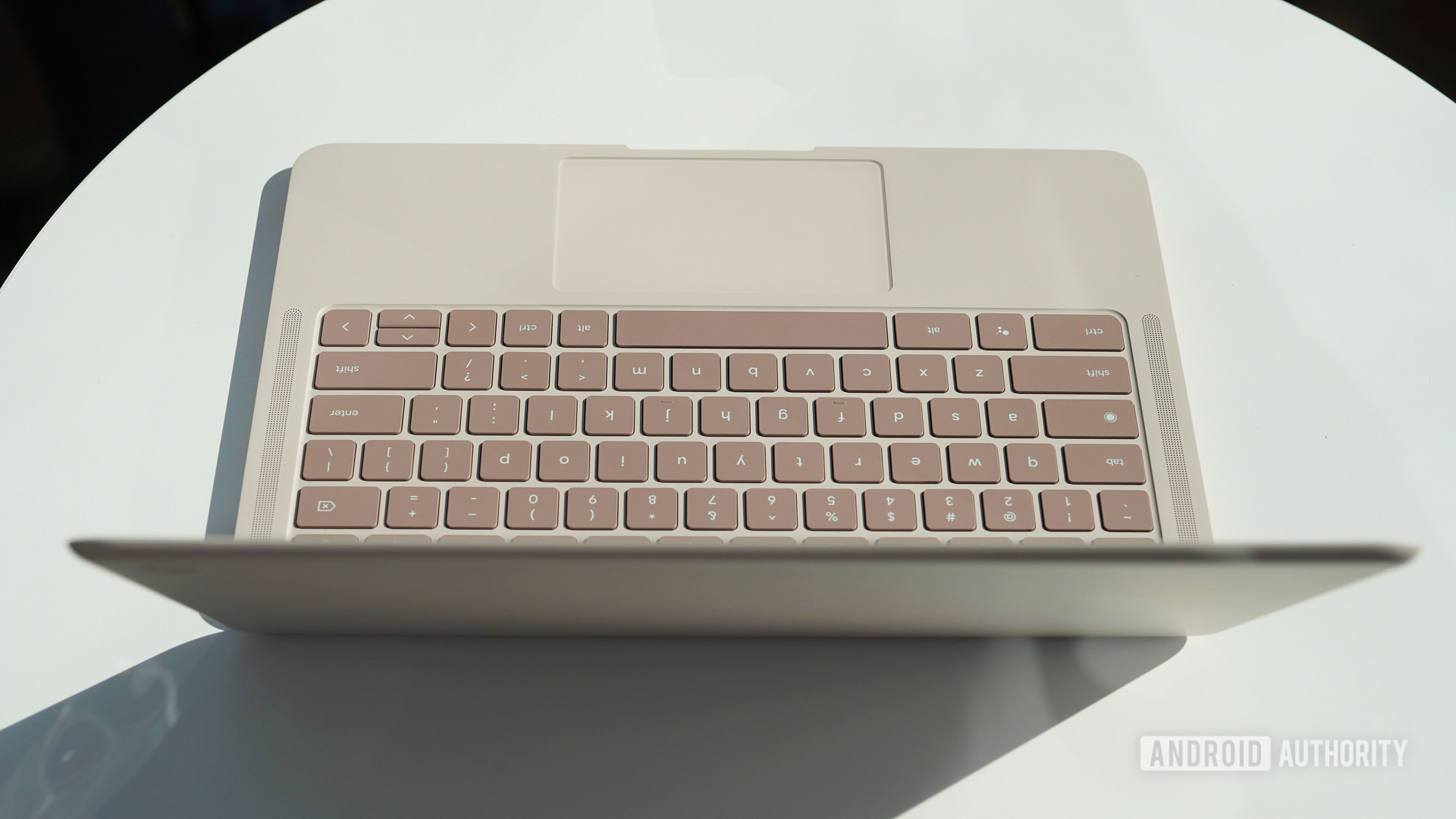
What’s the keyboard like?
If you’ve typed on a Pixelbook before you’ll be relatively familiar with how the Pixelbook Go keyboard feels. There are some differences in travel and feel that are, in my opinion, a step down from the original Pixelbook keyboard. The new Hush Keys may be quieter, but they also feel a little mooshier and less satisfying than existing Pixelbooks.
The new Hush Keys may be quieter but they also feel a little mooshier and less satisfying than existing Pixelbooks.
The keyboard is backlit and pretty standard-looking. From top to bottom there’s a row of Chrome shortcut keys, a number row and then the QWERTY keyboard with a dedicated Google Assistant button.
Speakers flank the keyboard on the left and right, and there’s a very Macbook-like groove beneath the trackpad for opening the laptop. Of everything, the trackpad was perhaps the cheapest feeling part of the Chromebook for me, but it worked just fine. Sadly, there’s no fingerprint unlock on the Pixelbook Go.
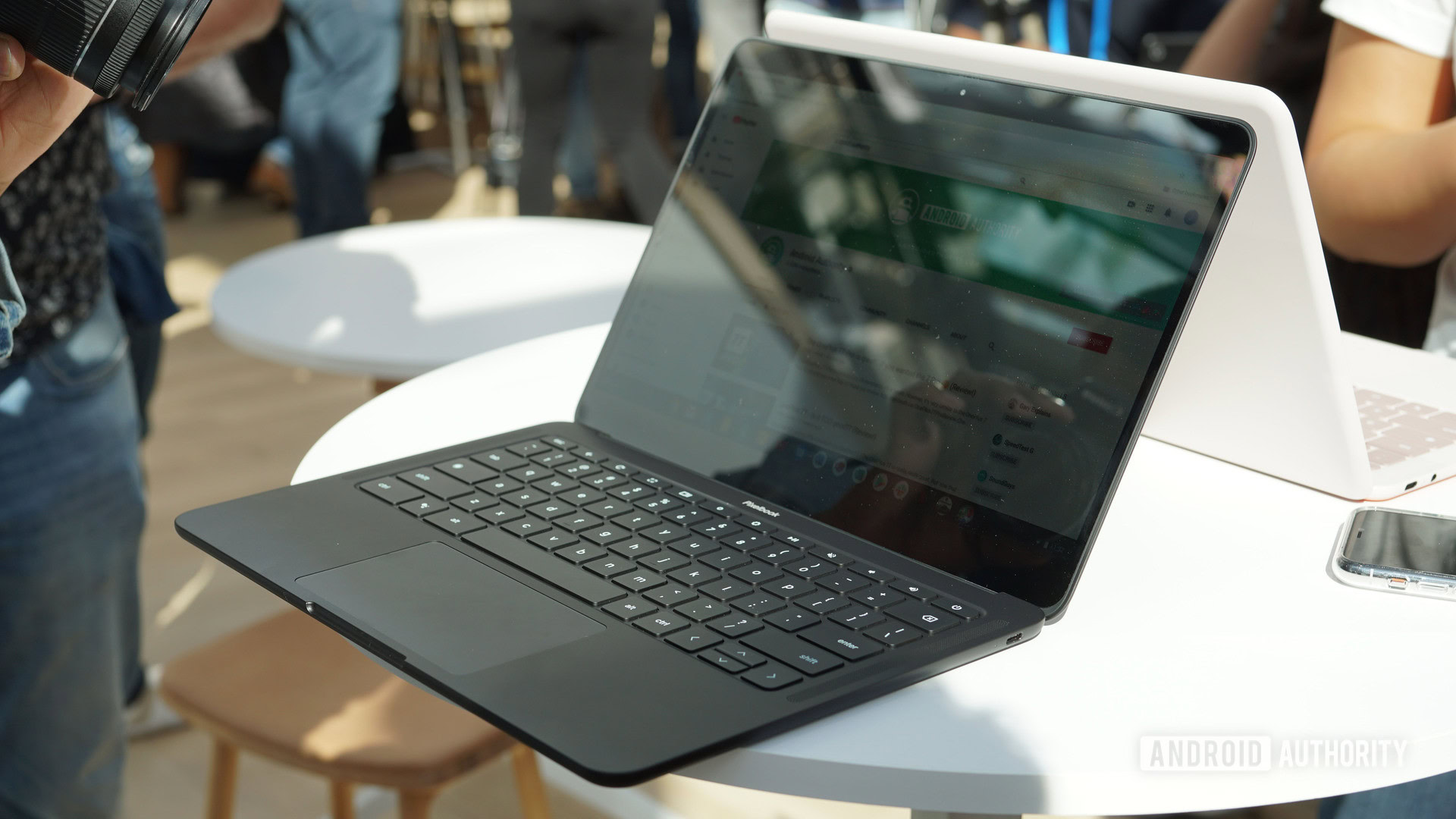
How’s that screen?
The 13.3-inch touchscreen comes in either Full HD resolution (166ppi) at the cheaper end of the spectrum or 4K (331ppi) at the higher price point. The Pixelbook Go comes with a 16:9 aspect ratio which I have to admit I prefer. There’s no Pixelbook Pen support here, which might be a big deal for you or it might not matter at all.
The main thing I noticed about the Go’s screen was the crazy amount of glare and lack of real brightness. The event space was admittedly very bright, but I was a little disappointed in the screen experience and it’s a shame there’s no option for a matte display. The touchscreen experience was good though, and the software was exactly what you’d expect from a Chrome OS device.
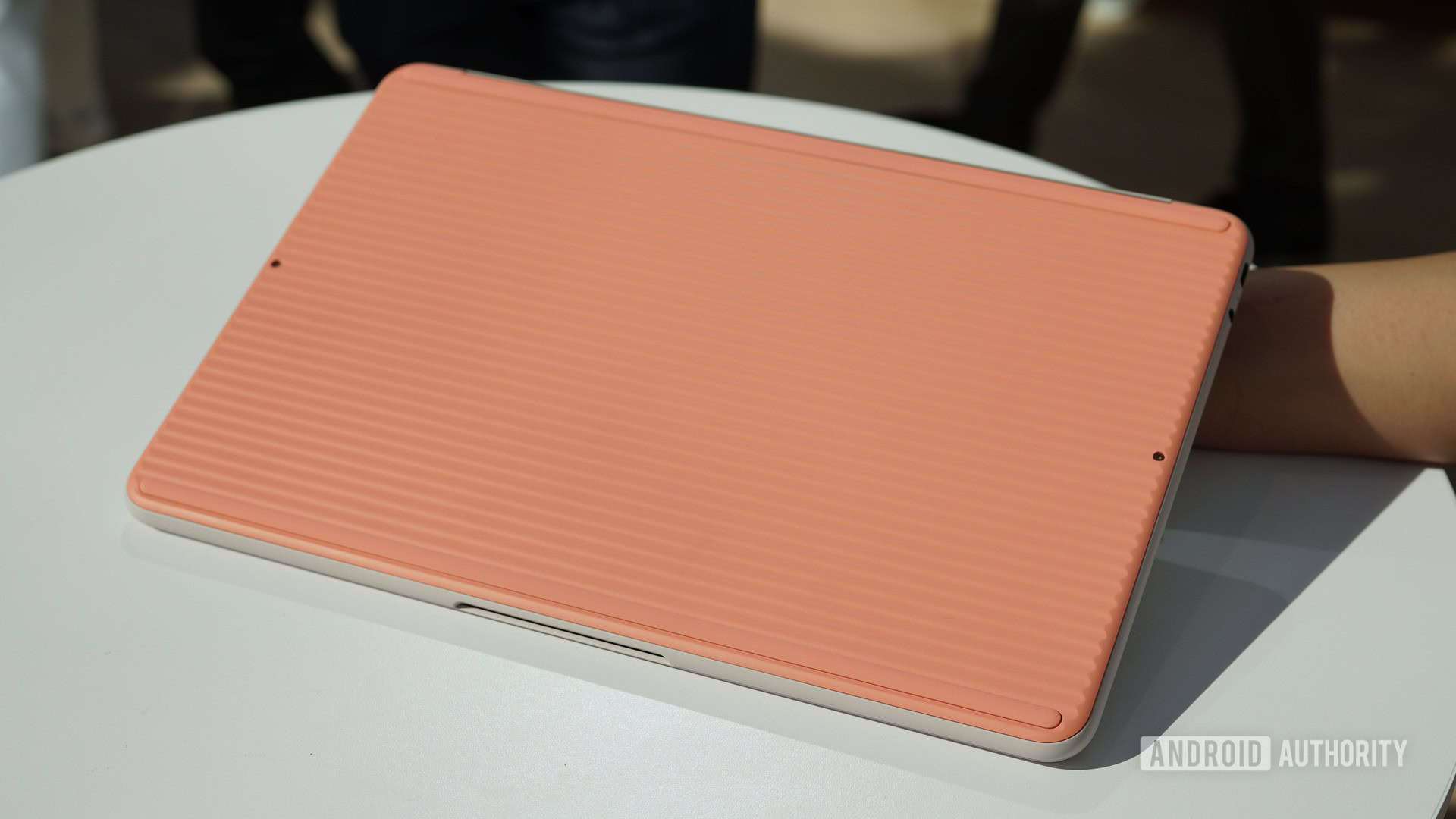
What’s up with the ribbed bottom?
I have absolutely no idea. I can’t tell you why it was necessary, but I’m happy it’s there. Trust Google to take a non-thing like the bottom of a laptop and turn it into the most interesting part of a product. It’s grippy and textured, presumably to stop it sliding off your lap, but function is the least interesting aspect of it. It’s instantly recognizable and the reason you’ll probably carry the Pixelbook Go with the base facing out.
Trust Google to take a non-thing like the bottom of a laptop and turn it into the most interesting part of a product.
Pixelbook Go specs
- Intel Core m3, i5, and i7 configurations
- 8GB or 16GB of RAM
- 64GB, 128GB, or 256GB storage options
- 2 front-firing speakers
- 2MP front camera – 1080p at 60fps
- Titan C security co-processor
- Wi-Fi and Bluetooth
- 13.3-inch touch screen, Full HD or 4K
- 16:9 aspect ratio on both display types
- Two USB-C ports
- 3.5mm headphone jack
- Two colors: “Just Black” and “Not Pink”
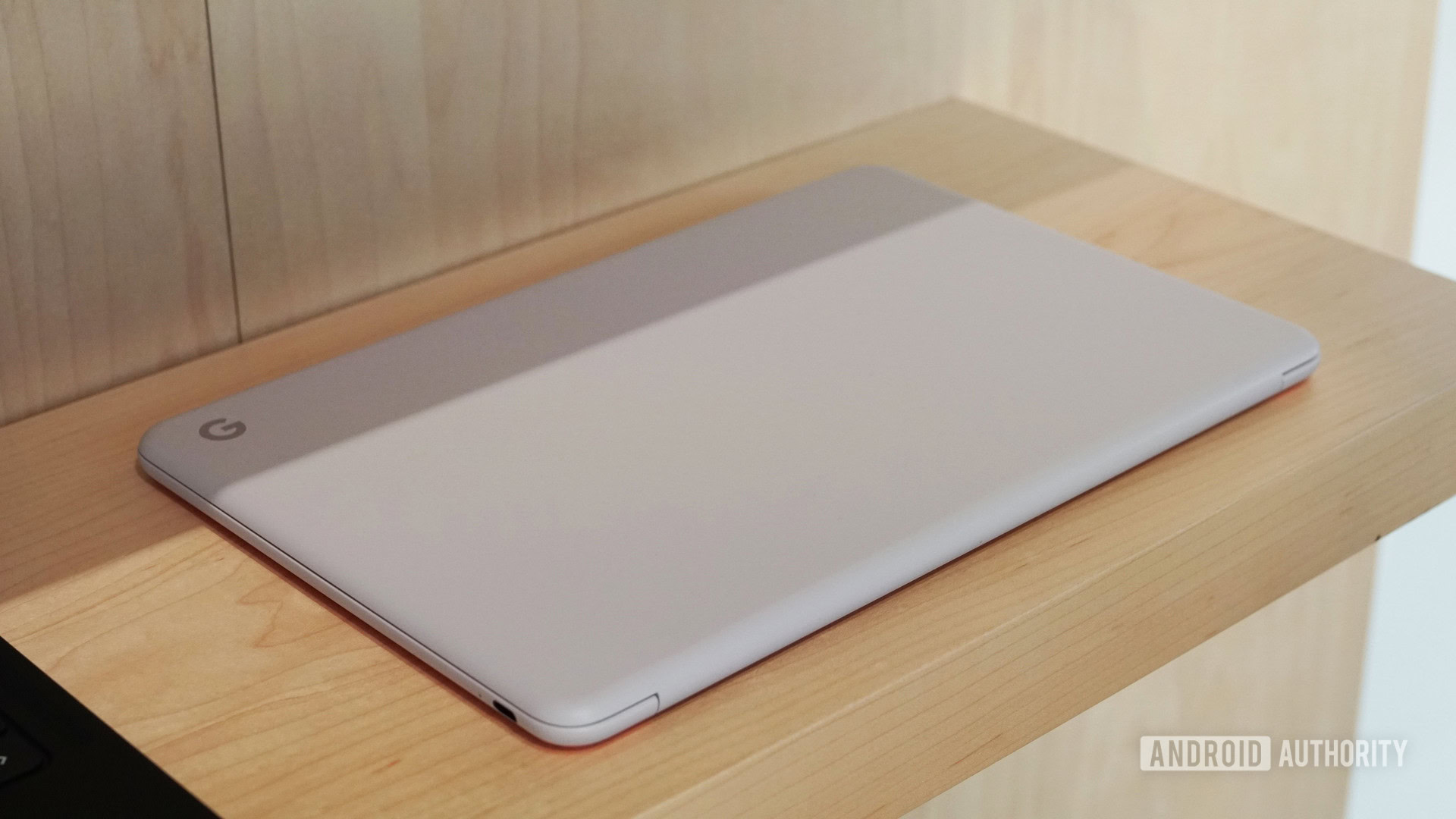
How thin and light is the Pixelbook Go?
Everyone’s pimping the Pixelbook Go for being light and thin — which it is — but it’s actually 30% thicker than the original Pixelbook and only a smidge lighter. It’s 39 grams lighter if you get the Full HD version and only 10 grams lighter if you spring for 4K. Regardless, it’s still only a little more than a kilogram and is going to be just as portable.
How’s the battery life?
Despite being basically the same size and weight as the original Pixelbook, Google managed to get a 15% larger battery into the Go. That’ll supposedly get you 12 hours of battery life as opposed to the original Pixelbook’s 10 hours.
Despite being basically the same size and weight as the original Pixelbook, Google managed to get a 15% larger battery into the Go.
The Pixelbook Go chassis is made out of magnesium (the original Pixelbook was made of aluminum), which helps keep the weight down. The black model is a little fingerprinty but no more so than any other matte black laptop. Like its predecessor, you’ll get two USB-C ports — one on either side — and a 3.5mm headphone jack on the left-hand side.
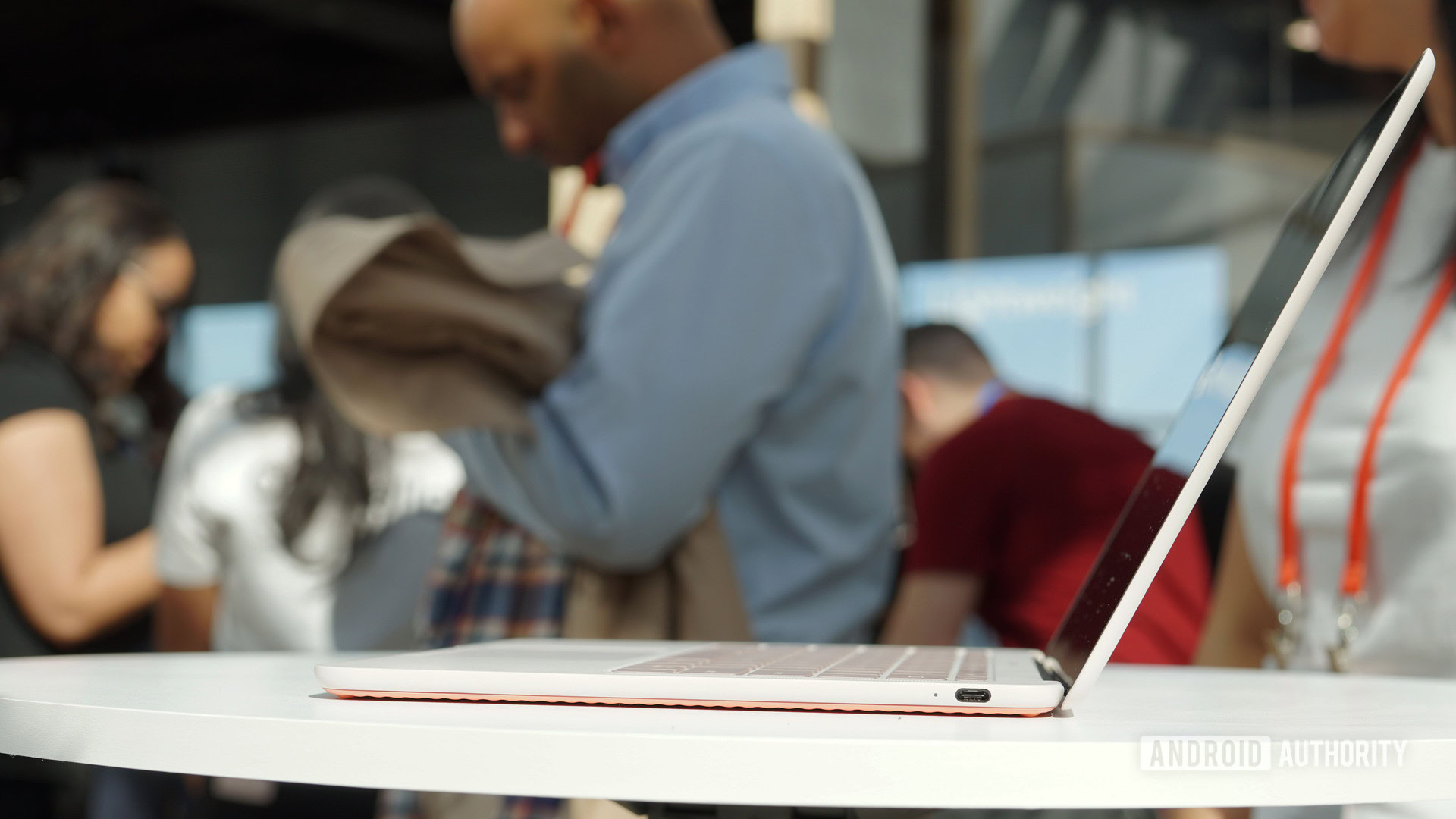
What’s performance like?
We’ll have more to say on performance in our full Pixelbook Go review, but so far it looks promising. Regardless of how you use your Chromebook, there’s a Pixelbook Go configuration to meet your needs:
- Intel Core m3 with 8GB RAM and 64GB storage ($649)
- Intel Core i5 with 8GB RAM and 128GB storage ($849)
- Intel Core i5 with 16GB RAM and 128GB storage ($999)
- Intel Core i7 with 16GB RAM and 256GB storage ($1,399)
These options cover the gamut of entry-level Pixelbook Go for students on the move to the spec’d-out beast that costs more than double as much. The Pixelbook Go is a much broader spectrum product than the original Pixelbook or Pixel Slate, and will no doubt sell a lot better than both. Right now only the two versions with 8GB of RAM are available for pre-order. You can put yourself on the waitlist for the Core i5 with 16GB of RAM and the high-end version is “coming soon” according to the Play Store.
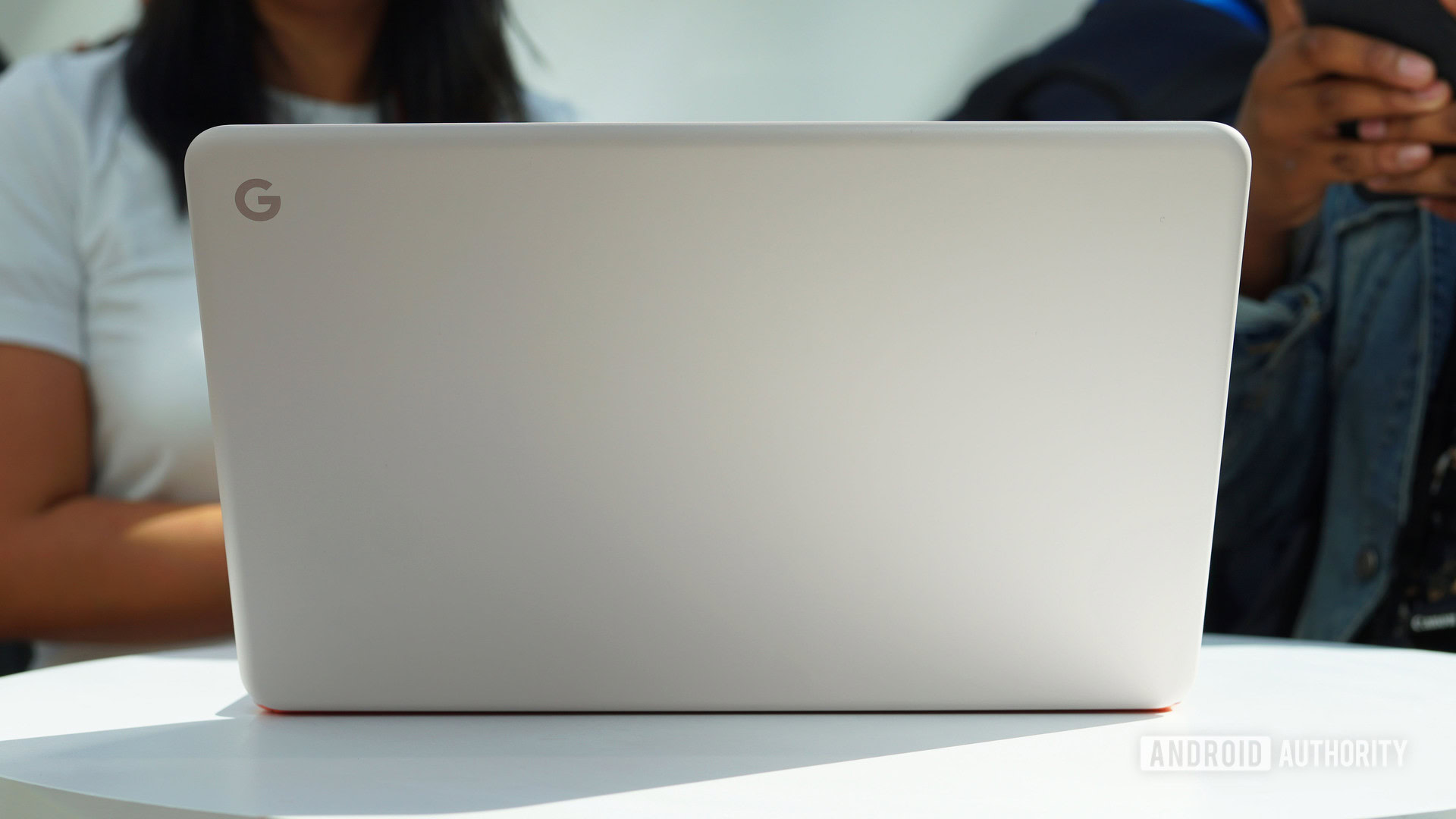
The skinny
Google says it took everything it learned from the original Pixelbook and refined it in the Pixelbook Go. I’m not sure I believe this, as the original Pixelbook is a much more premium looking and feeling product. The Pixelbook Go feels more like the result of the familiar trickle-down effect we see in smartphones, where flagship features make their way to more affordable price points.
Regardless of the competition, the Pixelbook Go feels like the right move for Google.
The big challenge for Google here is what else you can get for a similar or cheaper price. A $649 base model is definitely nice to see after the original Pixelbook and Pixel Slate price tags, but 64GB of storage and 8GB of RAM is not a lot. There are some great Chromebooks already available, such as the ASUS Chromebook Flip C434 which has more ports, a larger display, the same core specs — and still costs less. Google was pretty clear, however, that it’s happy to leave the cheaper end of the spectrum to its third-party Chromebook partners.
Regardless of the competition, the Pixelbook Go feels like the right move for Google. Where the original Pixelbook was too expensive for most and the Pixel Slate was too niche, the Pixelbook Go feels like a Pixelbook for everyone. It has a good mix of smarts, specs, and Google-y style that better complements the rest of Google’s product range than either of its predecessors.
Currently available models will ship on October 28.